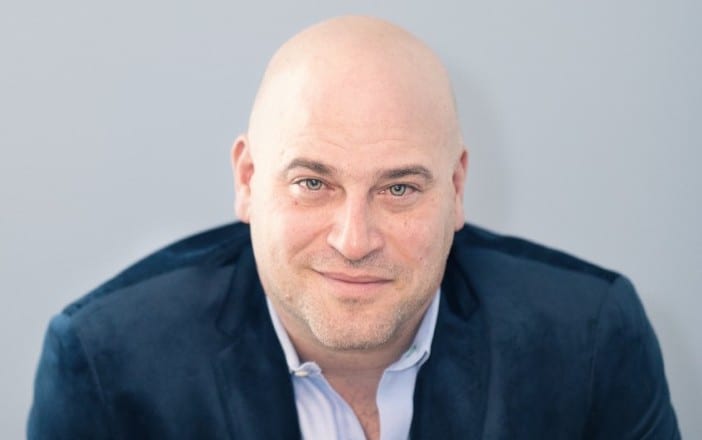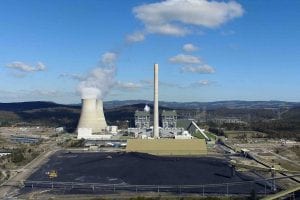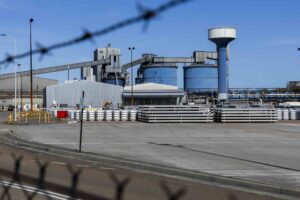
In Tal Klein’s new novel, The Punch Escrow, humans have successfully tackled disease and climate change, but powerful corporations control everything. The book has created a stir among sci-fi fans, and there are already plans to adapt it to the big screen. In this conversation with Nexus Media, Klein shares his perspective on science, technology and the future of our species. This interview has been edited for length and clarity.

What’s the premise for The Punch Escrow?
It’s the year 2147. The world is neither a utopia nor a dystopia — things have pretty much progressed at their current pace.
Nanotechnology and genetic engineering have become mainstream medicine. 3D printers now more closely resemble Star Trek replicators, and while climate change and air pollution haven’t necessarily been solved, they’re being addressed with carbon-fume eating mosquitoes who excrete water.
Yes, it’s almost always raining in the future — people try not to think about where it comes from.
Most important to the plot: teleportation has become the en vogue method of transportation, via a mechanism called the Punch Escrow.
Patented by International Transport — one of the most powerful companies on Earth in a world governed by corporations — the Punch Escrow makes teleportation the safest form of transportation by ensuring that a passenger who cannot arrive at their destination simply emerges unharmed from the chamber they initially entered.
It’s deemed the safest method of transportation until Joel Byram, an average 22nd-century guy in New York, is haphazardly duplicated en route to a second honeymoon in Costa Rica, leading International Transport to try to fix the bug by eliminating a duplicate.
How does the future look different from today?
The Punch Escrow is a hard sci-fi book, meaning the technologies that exist in my version of 2147 are all rooted in modern science. I like to call it a near-future novel because the technological innovations that permeate everyday life in the story shouldn’t feel alien. They’re pragmatic evolutions of the science surrounding us today.
I think the main difference between The Punch Escrow’s 2147 and today is the structure of government. I worked with an anthropologist to try to develop a thesis on what signals from today’s society might give us clues about tomorrow’s governments.
We ultimately landed on the thesis that, since elected officials’ jobs have shifted from serving the proletariat toward serving corporate interests — because the latter is a more reliable path to re-election — then it would stand to reason that future society would cut out the middlemen. The future is a corporatocracy.

Why is a warmer planet such a potent element in that future?
If current events aren’t enough to convince you that our climate is dramatically changing, then there’s probably not much use reading further. Still here? Great.
In the present, we’re no longer talking about climate change in the abstract. We’re talking about our changing climate. Ice sheets in Greenland and Antarctica are losing mass at an alarming rate. Coral reefs are dying from heat stress, leading to entire marine ecosystem collapse.
The anthropological impacts of climate change from dangerous weather patterns such as Harvey and Irma, heat waves, droughts and sea-level rise are beginning to manifest themselves.
Greenhouse gas reduction alone will soon not be a sufficient remediation. We’ll need to find a way to actively remove these fumes from the air in order to survive. This need will create demand, and demand will catalyze supply.
How does the planet of the future deal with climate change, and what inspired those ideas?
Future society will commercialize and industrialize clean air, thus solving for some of dirty air’s climate side effects. The end result in the book follows what we’re currently doing to clean water — that is, just enough.
If everyone’s air was dangerously polluted, that might galvanize the world to action, but even in that case there would likely be tiers of air quality, just as there are tiers of water quality today.
The commoditized solution I put in the book was developed with the assistance of a CRISPR engineer: genetically modified mosquitoes that eat greenhouse gases and excrete water seemed just like the sort of messy solution we might realize (although I hope we’ll find a more elegant solution).
Humans tend to opt for quick fixes and shortcuts. I think it’s because we are a breed largely driven by the pursuit of instant gratification.
There are more promising options out there, such as methanotrophs (unicellular organisms) that eat methane and exhale oxygen, so I remain hopeful that whatever solution we find to combat air pollution is more elegant than what I present in the book.
As your book transitions to film, what key messages from your novel do you hope are retained?
James Myers at Lionsgate convinced me he knew how this book would translate to film. He tapped James Bobin to adapt and direct my book, and I trust both of them completely.
They get the things that are important to me, mainly Joel’s voice, Sylvia’s strength and 22nd-century Earth’s scientific realism. Now that Todd Lieberman and David Hoberman have been attached to produce, I’m more confident than ever. I think it’ll be a great movie.
This interview was conducted by Josh Chamot, who writes for Nexus Media, a syndicated newswire covering climate, energy, policy, art and culture.








